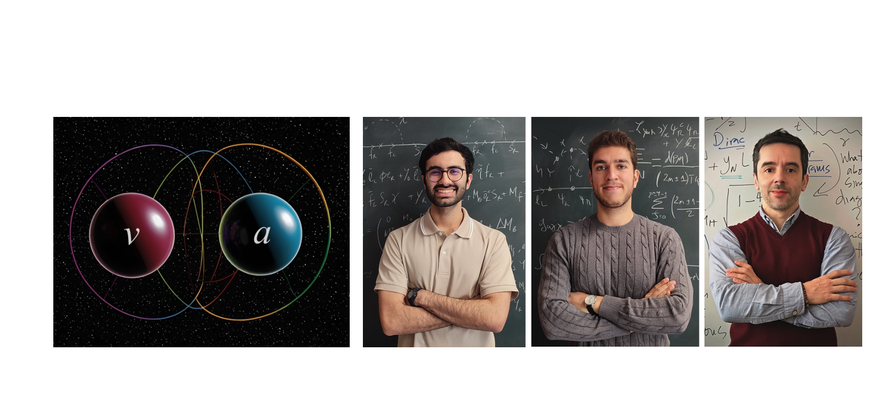Physics Department researchers propose “unifying solution” to particle physics problems
Published on Feb. 29, 2024, 2:20 p.m.

A group of researchers from the Center for Theoretical Particle Physics (CFTP) at Instituto Superior Técnico has proposed a new solution to some of the outstanding problems in particle and astroparticle physics. The study was led by CFTP PhD students Aditya Batra and Henrique Câmara, in collaboration with their supervisor Filipe Joaquim and researchers Rahul Srivastava (IISER, Bhopal, India) and José W.F. Valle (IFIC-University of Valencia, Spain). The article was published on February 1 in the prestigious journal Physical Review Letters.
This work is based on three unanswered problems - (1) why neutrinos have mass and why it is so small, (2) which particle constitutes dark matter and (3) the so-called 'strong CP problem', related to the fact that an electric dipole moment has not yet been observed in the neutron.
While these problems are apparently unrelated, the solution proposed by the CFTP researchers is innovative in that it considers the existence of new particles with 'color', a quantum property associated with the strong interaction (responsible for the cohesion of atomic nuclei), which are responsible for generating the mass of neutrinos at the quantum level.
In this context, the candidate for dark matter is the axion, a particle that arises as a consequence of the mechanism that guarantees the solution of the 'strong CP problem'. Since the axion binds electromagnetically to photons, the axions produced in stars like the Sun can be probed experimentally by analyzing the solar flux. “Overall, these experiments contribute to our understanding of the role of axions in fundamental physics and their potential connection to dark matter,” explains Filipe Joaquim. The idea thus opens the way to new phenomenological studies with an impact on other aspects of particle and astroparticle physics.
particles researcher